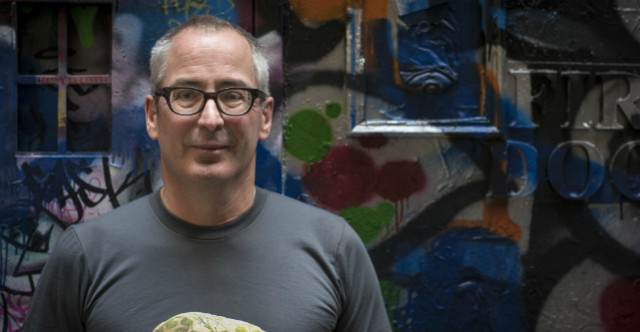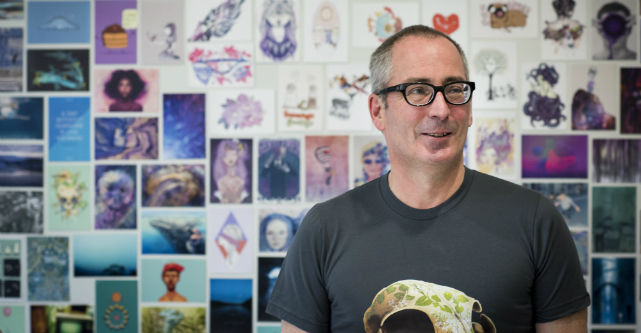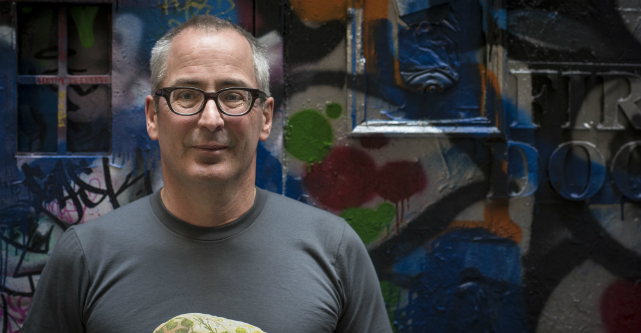“Failure is so close”: Redbubble founder Martin Hosking on how he got through the “Valley of Death” to build a $288 million startup – StartupSmart

Martin Hosking still remembers the day he realised he had descended into the “Valley of Death”.
It was a Monday morning and he was still in the early days of developing RedBubble, a two-sided marketplace for artists.
“I remember coming in on a Monday morning and the thing would not have moved,” Hosking tells StartupSmart.
There was no growth, no new users on either side and no new revenue.
“We had no growth for weeks and weeks. I thought, ‘what am I doing here?’” he says.
“To do it for a week or two weeks is one thing but for month after month it becomes really hard.”

The Valley of Death
The so-called ‘Valley of Death’ has become somewhat of a startup trope. But despite the cliché aspects, it’s a very real, difficult phase that most founders will experience when trying to establish a business from the ground up.
It refers to the difficulties of keeping a startup alive with negative cash flow in its early stages, before the product or service is bringing in the revenue. With most investors wanting some sort of market traction and proof of concept, many startups will never emerge from the Valley of Death.
“All startups have a Valley of Death that they go through,” Hosking says.
“Failure is so close and that makes you very anxious.”
Redbubble was launched in 2006, but Hosking says it wasn’t until 2010 that it fully emerged from the Valley of Death with continual growth.
“It was in 2010 when the growth really started and the company took off,” he says.
“Inevitably when you look back you can’t see exactly the reason why it was. It tends to be a few things that happen at the same time. But once the marketplace gets going you just have growth problems.”
Finding purpose
When trying to persevere through the tough times, he says it’s crucial that founders have a purpose that extends beyond just making money.
“What helped us was that the purpose of the company was always very clear,” Hosking says.
“We had a sense of serving artists and doing good things by them. The sales might not have been growing and getting customers was painful but the artists were always very grateful about what we were doing.
“That was the psychological prop that we needed.”
External funding is also key to overcoming the hard early days, and is especially crucial for marketplace-style startups, Hosking says.
“You need confidence, and it’s dangerous to be really, really under-funded,” he says.
“You need that way of getting through. If you’re starting a marketplace you need to think about funding and whether you’ll have enough runway to get through the Valley of Death.”

What he’d do differently
Hosking says there’s one big thing he’d do differently if he had his time with Redbubble over again.
“We were doing many things right from the early days but we focused too intensely on artists,” he says.
“One thing I would do differently is I would have done more research into who the consumers were early on. We waited too long to do that.
“In 2010 we did a big branding project and in retrospect as a marketplace we had focused on one side for too long.”
Although admitting to considering throwing in the towel multiple times, it has all paid off for Hosking and his time.
This year Redbubble successfully raised $40 million through an IPO that valued the startup at $288 million.
But this hasn’t changed the way the company is run.
“It surprisingly hasn’t changed really,” Hosking says.
“I had the experience of IPO-ing during the original dot com era and that was a major transition then. At Redbubble we’d been preparing for it for two years and the value of the stock on a day-to-day basis isn’t nearly as important as it will be in a few years’ time.
“It doesn’t really change that much and that has been a little surprising. The biggest change is that I have less work to do now I’m not doing the IPO.”

